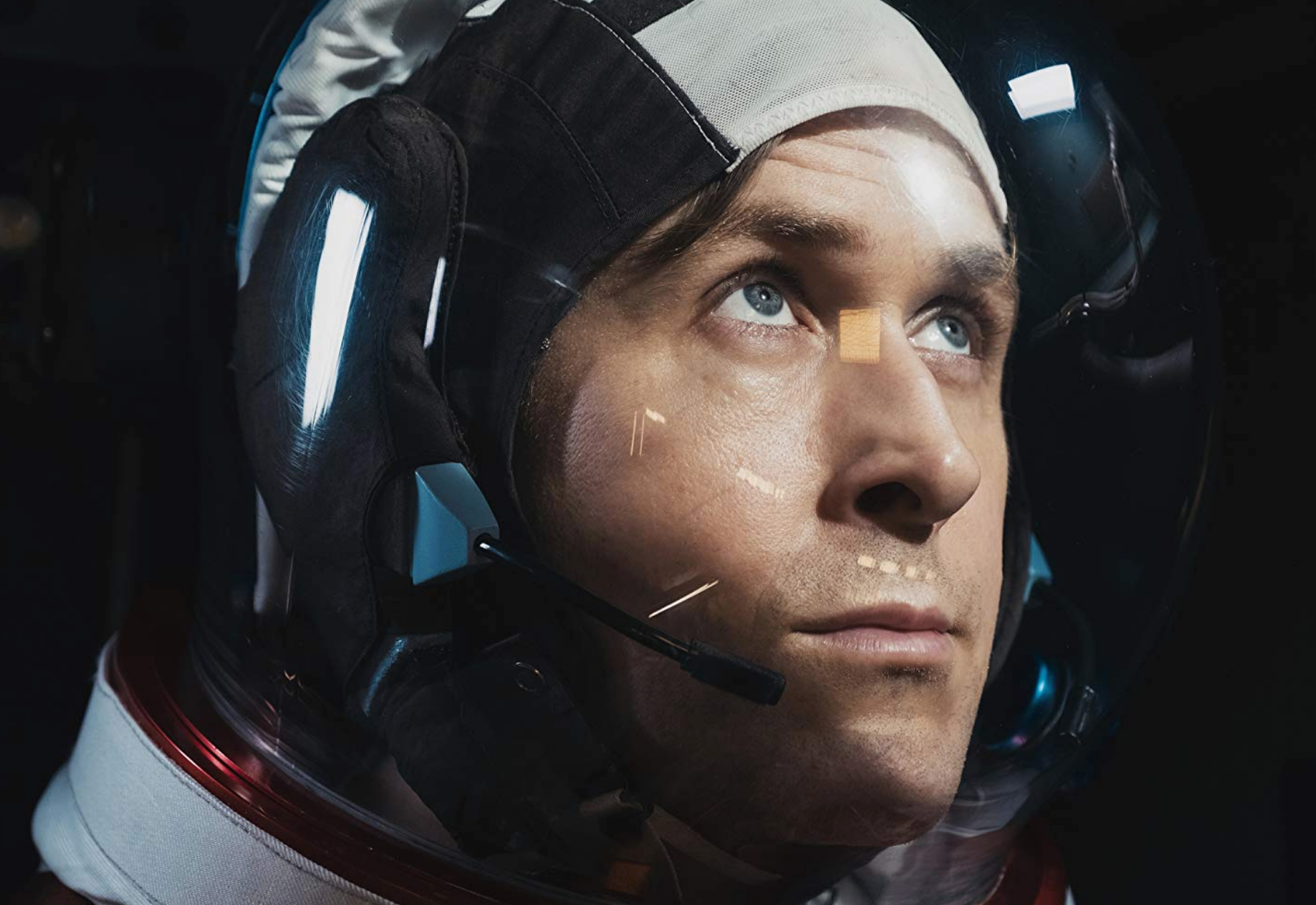
Photo Credit: Imdb.com
By Vincent Abbatecola
Oftentimes, filmmakers become known for directing movies within a certain genre. However, there are occasions when they can take audiences by surprise by venturing into a different genre and setting creative challenges for themselves behind the camera, thereby allowing moviegoers to witness a new vision from a director.
Damien Chazelle is the latest example of this with his drama, “First Man,” which tells the story of the 1969 moon landing. While the three previous films that Chazelle has directed (“Guy and Madeline on a Park Bench,” “Whiplash,” and “La La Land”) have narratives that deal with music, Chazelle branches out to deliver a thrilling and, at times, haunting depiction of a landmark moment in history.
In the 1960s, Neil Armstrong (Ryan Gosling) is a NASA test pilot who’s temporarily grounded following some unsuccessful flights. After proving himself later on, NASA selects him to command the Apollo 11 mission to the moon.
Gosling doesn’t give a typical biopic performance, but that’s because this movie isn’t your typical biographical drama (more on that later). It’s a role that requires Gosling to do as much nonverbal acting as verbal. And, despite this movie telling the story of a miraculous achievement, Gosling’s performance isn’t quite meant to be uplifting, but one that exhibits Armstrong’s inner emotions as he remains determined to push forward with his tasks, despite experiencing multiple loses along the way. It’s a performance that reels you in because it’s not showy in the slightest, but one that relies on Gosling to give a performance that’s built on small details. This lets you decipher Armstrong’s thoughts a little bit at a time, with his character always finding himself needed by both his work and his family, and Gosling does impressive work with exhibiting his character’s strain as Armstrong tries to meet the expectations of both.
Claire Foy provides a superb performance as Armstrong’s wife, Janet. Foy elicits the emotional stress of not knowing if she’ll see her husband again after his mission and displays someone who must remain strong for the sake of her family. This is highlighted in one of the film’s best segments where she urges Neil to sit down with their sons and explain the possibility of him not returning.
The screenplay by Josh Singer, which is based on James R. Hanson’s book, “First Man: The Life of Neil A. Armstrong,” presents a narrative that has something much deeper on its mind than just chronicling NASA’s historic achievement, as it also reflects on the personal hardships that Neil must face within NASA and at home, all of which make this a nuanced character study of Armstrong. It’s a poignant, contemplative view of Armstrong as he experiences the physical and emotional tolls of his monumental task. With these factors, “First Man” is more than your standard biopic.
Chazelle re-teams with his “La La Land” cinematographer, Linus Sandgren, to bring us stunning camerawork that brings you right into the danger of Armstrong’s undertakings, such as the flight sequence that opens the film and the moon-landing scene. For the former, Sandgren and Chazelle provide a claustrophobic feel as Armstrong is confined to the limited space of his plane when he flies higher and higher into the vast unknown and faces technical difficulties, with several of the shots taking place from Armstrong’s point-of-view, allowing us to be in his position and providing us with a stronger feeling of the life-threatening situation that he experiences in those moments.
When it comes to the moon-landing segment, one of the most notable aspects of Sandgren’s cinematography is how he captures, in the simplest of ways, Armstrong accomplishing his goal. As Armstrong is being strapped into the Apollo 11 spacecraft, there’s a point-of-view shot from him looking out of one of the windows, with the moon taking up just a part of the window as it looms in the sky. When the ship gets closer to the moon, we have another point-of-view shot from Armstrong as he looks out of the window, with the surface of the moon then taking up the whole window. It’s a minor detail, but a significant one.
In addition to Sandgren, Chazelle re-teams with “Whiplash” and “La La Land” editor Tom Cross and composer Justin Hurwitz (the latter of whom provided the music for all three of Chazelle’s previous features). While this quartet provides magnificent work throughout the film, it’s the moon-landing sequence where the combined talents of these four reach a powerful apex. What helps in making this scene so compelling is how it manages to keep you in suspense, even though you know the outcome.
While it’s understandable to see Chazelle’s direction as detached when it comes to the characters, it’s meant to be that way because this is a story about the boundaries that we tend to put up around ourselves when focusing on breaking boundaries with our work, being so preoccupied that we tend to close off our loved ones in order to keep our minds on the task at hand. This is summed up in a quiet, yet effective way in the film’s closing scene.
“First Man” represents another giant leap that’s taken by Chazelle, and given his career thus far, he will take many more.
Grade: A

You must be logged in to post a comment Login